
views
Preparing to Own a Camel
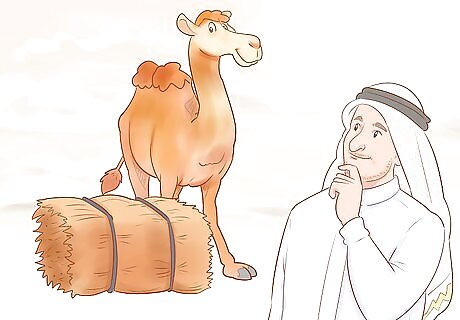
Understand the commitment and cost behind owning a camel. This is especially true if you plan to keep a camel as a pet or livestock beyond a short trip. Camels can live for 40 to 50 years. After buying and transporting your camel, expect to spend thousands of dollars on food, equipment, grooming, vaccinations, and specialized vet care each year. It costs around $2,000 USD to care for a camel annually, and initial prices for camels vary depending on your region and the camel breed. In the US, expect to spend around $10,000 for a mature gelding and up to $17,000 for a pregnant female. In Tanzania, a camel will likely cost $700 USD. In Egypt’s camel markets, prices range from around $50 USD to $380, but the animals are often poorly treated there. In the UK, specialized racing camels cost around $55,000 USD. Racing camels cost over $12,000 to care for annually. If your camel is not properly trained, you may need to spend additional time and money to train it. This will be important when it comes to grooming the camel.

Prepare your camel’s pasture, or buy accessories to ride your camel. If you plan to keep the camel for a pet, you will need a pasture with strong fences and a three-walled shelter. Plan on having at least two acres of land per camel, and keep the camels away from horses. It might be a good idea to keep at least two camels, since they’re herd animals. If you plan to ride the camel, you will need a saddle, a rope and peg, and blankets. You might also find a camel stick helpful too. If you plan to use the camel to carry stuff for you, you will need additional rope and sturdy sacks. Sometimes this can hurt the camel's back if you put too much weight on, so be careful.
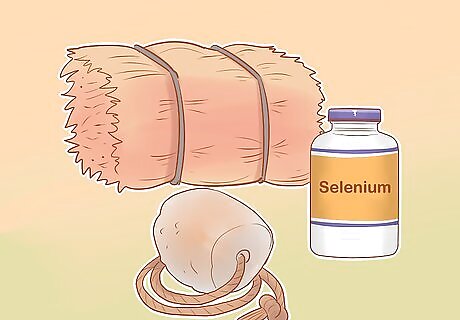
Make sure that you have proper nutrition for the camel. Camels can go for a long time without drinking water, but they need food daily. Before you buy your camel, it’s a good idea to have some alfalfa hay and oat hay ready. You can also feed them corn or oats from time to time. Preparing food in advance is especially important if you plan on traveling with your camel to places where it cannot graze. Camels need 5 ounces (140 grams) of salt every day. If the camel's food does not already include salt, consider getting a salt block. Check that your camel gets 4-8mg of selenium per day in its food or via supplements. A camel will die if it does not get enough selenium.
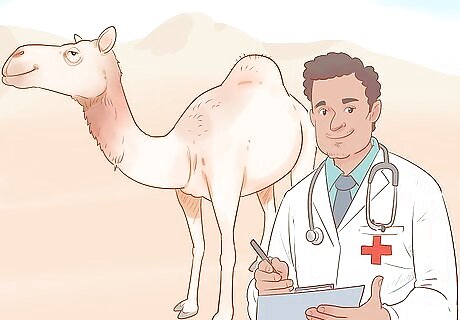
Understand the effort that goes into proper camel care. Just like cats and dogs, camels need yearly vaccinations. They also need to be trained, not just for riding, but also to handle proper grooming. Camels need a West Nile virus vaccine. These can be administered by a specialized vet. If you are not willing to give your camel vaccinations, you would end up with a very sick camel. Camels need to be groomed. This will keep their thick fur clean of dust and insects. Regular brushing will allow you to catch any bites, bumps, or cuts, and to treat them before they get infected. Camels have nails instead of hooves. They will need those trimmed by a vet or farrier. They will need their toenails trimming either by the vet or a farrier.
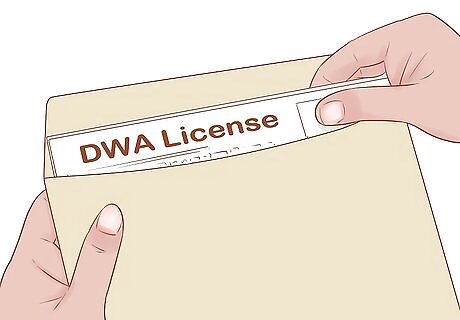
Sort out any necessary paperwork. Depending on where you live, you might need special clearances, authorizations, and paperwork in order to own a camel. For example, if you live in the United Kingdom, for example, get a DWA license. You need this license to legally keep a camel in the UK.

Plan the journey home. Depending on where you live, this can be not only expensive for you, but stressful for the camel. In general, ground-based transportation will be less expensive and less stressful than overseas transportation. If you are using an agency to transport your camel overseas, be sure to ask if they offer any aftercare. Some agencies just drop the camel off at a predetermined location, and how you get your camel home from there is up to you.
Choosing the Right Camel
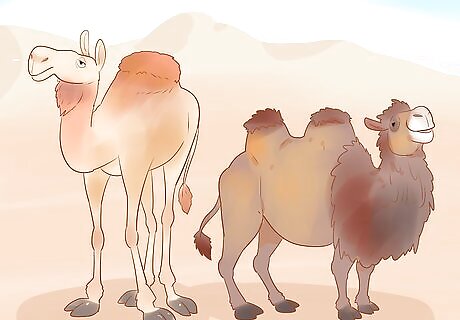
Decide on the breed of camel. The breed affects the number of humps a camel has, its size, and fur. For example, the Dromedary has one hump. It tends to be taller, and a natural desert dweller. The Bactrian has two humps and a stocky build. It gets a thick woolly coat in winter, making it ideal for colder climates.
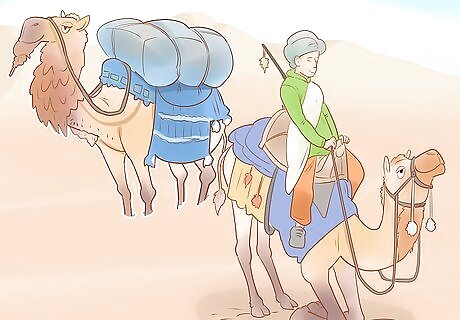
Buy a strong camel if you are going to use it for traveling long distances. This is especially important if the camel has to carry supplies, people, or both. A weak camel can get hurt easily, especially if it is not accustomed to bearing so much weight. Here are some things to consider: Observe the camel's knees when it sits and stands back up again. Look for any signs of shaking or trembling. This is an indicator of weak knees. A camel with weak knees will not be able to safely bear heavy loads. Watch how it walks. If the camel has a limp, this could be a sign of weakness or illness. This could spell problems later on in your journey.

Choose a docile, obedient camel if you plan on using it for traveling. Camels are large, strong creatures. A disobedient camel will be difficult to control by strength alone. You also don't want a camel that bites or kicks. A well-trained camel is important not just for riding, but also for grooming purposes. The camel must be able to stand still while being brushed and having its nails trimmed.

Watch how the camel sits and stands back up again. The movement should be smooth and fluid, especially if you plan on riding a camel. Unlike with horses, the camel must be seated in order for you to get on and off. You can't mount a camel if it is standing. If the camel sits or stands too roughly, you'll be more likely to fall off.
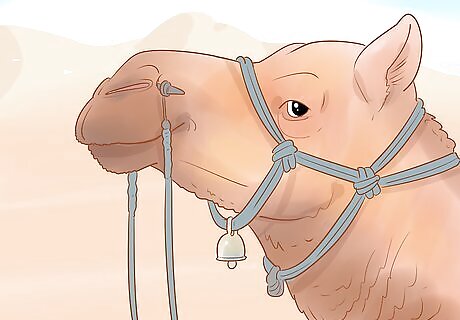
Make sure that the camel will accept a rope and peg if you plan to ride it. Camels do not wear bridles and bits like horses do. Instead, the reins are attached to their muzzles through a peg in their nose. If the camel gets fussy while wearing a nose peg, it might not be trained for riding.

Check the camel’s overall health. An unhealthy camel will only create problems, whether you are going to ride it or keep it as a pet. Check the camel's skin and mouth for any sores. Also, if you can, take a look under its feet. There should be no sores or open wounds. Any of these are indicators of serious medical conditions, which can be disastrous, especially if you are traveling in the desert. Even if you aren't planning on ever riding your camel, you want to get a healthy one. An unhealthy camel will require veterinary care, which can cost a lot.

Choose a younger camel between four and eight years old. These camels tend to be experienced enough while being strong and healthy.
Buying the Camel

Know where to buy a camel. You do not necessarily have to travel to the Middle East in order to buy a camel. For example, if you live in the United States, you might be able to find a camel breeder in your state. Ethiopia, India, the Gobi desert, and Australia all sell camels. Livestock markets are a great place to start looking. In India, the city of Pushkar has a huge camel festival in October and November. Some organizations will allow you to view and/or select your camel online before you physically travel to the location.

Be prepared when you are visiting a market in a foreign country. Sellers may recognize that you’re not a local and flock to you. Some may be honest and helpful, while others might be less so. The dishonest ones may try to use your inexperience against you and overcharge you. If you are visiting a foreign country to buy your camel, familiarize yourself with that country's culture customs, especially when it comes to business, bartering, and haggling. This will prevent you from appearing rude or disrespectful.

Consider bringing a local person with you. This can be a friend or someone you trust. Try to find someone who knows something about camels. This person can help manage the bartering for you, and ensure that you get a fair price. Offer to pay the person who is helping you for their time, travel, and effort.

Know that camel prices can vary depending on various factors. Camels will be cheaper during times when they are plentiful, and more expensive when they are scarce. Other factors that might influence the price of a camel may also include any of the following: Its age and sex Whether is it used for meat, milk, or fur Whether it is used for riding or travel How well it is trained Its parentage, especially if it comes from a breeder.

Name your camel, unless it already has a name. Choose a name that best matches your camel. Decide based on your fancy, the way they eat or walk, or even just the way they look.











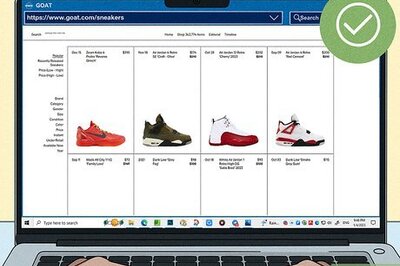







Comments
0 comment